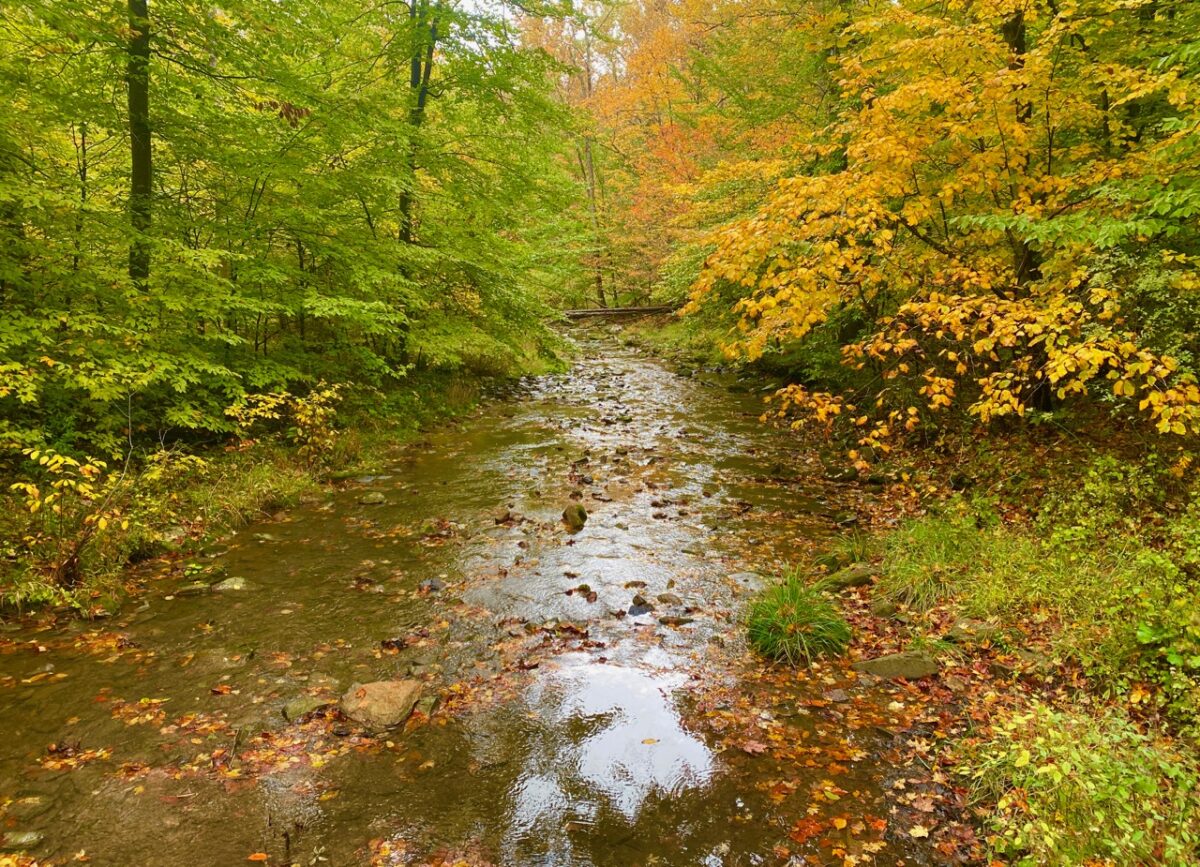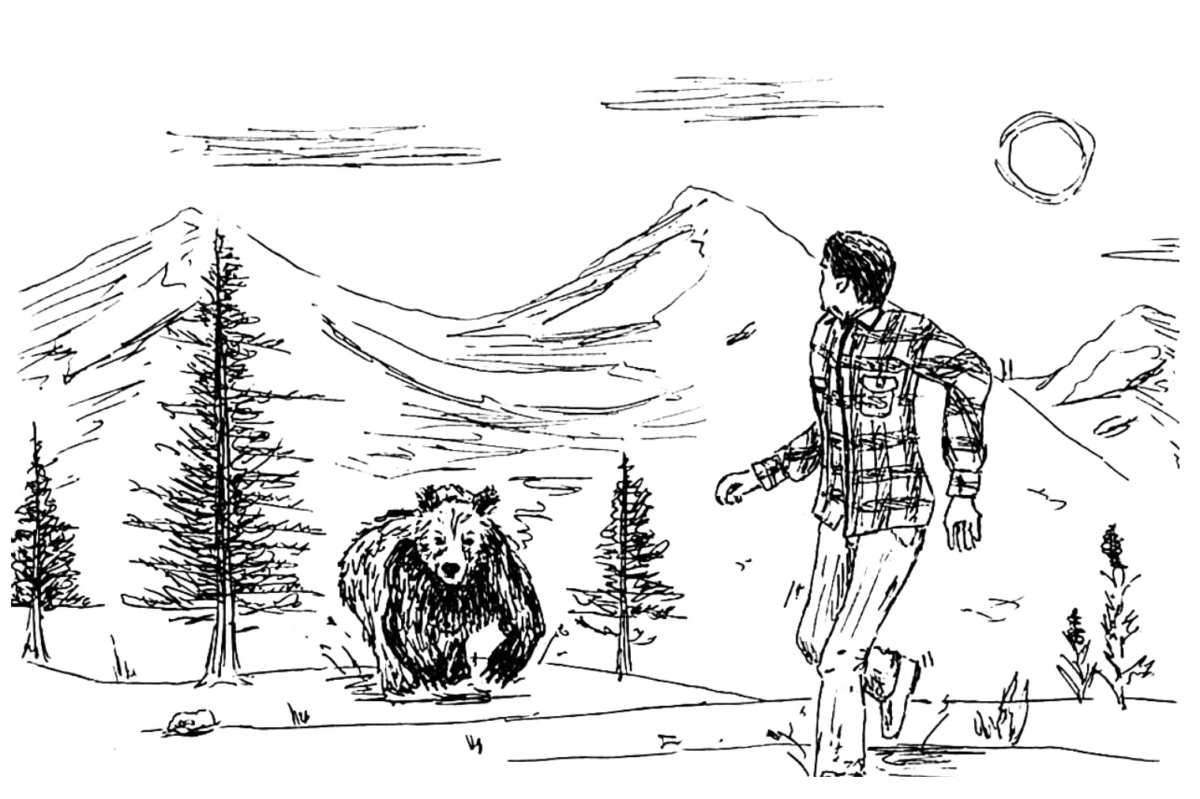Editor’s Note: It has long been claimed by nature writers, scientists, psychologists and even the National Park Service that spending time outdoors in nature is good for human physical and mental health. My good friend Edward O. Wilson (no relation) put forward the theory of Biophilia in a book by that name in 1984. The idea that humans have an innate love and need for nature has been adapted to many different areas of study, including evolutionary psychology.
There is much research available these days showing that spending time in nature can help decrease anxiety levels and reduce stress and feelings of anger. Exercise can also help, but it’s even better when you’re outside. Regular access to green spaces has been linked to lower levels of depression and improved concentration and attention.
I was one of the first news reporters to write about this more than 30 years ago. When it came time for me to develop a semi-retirement plan a decade ago, I found a way to incorporate both living a low carbon footprint life to do my part for the environment, and to live most of my life ensconced in nature in a Roadtrek camper van modified as a media van.
As many people discovered during the height of the coronavirus pandemic, traveling to spectacular places like national parks in an RV was also a way to escape the threat of contracting Covid as well as taking a break from all the bad news in the world in a time of great crisis.
Another benefit of traveling and hanging around outside in great, beautiful campgrounds is meeting like minded people. So it was in the summer of 2022 when I had the honor and privilege of volunteering with the National Park Service and taking care of a campground in Catoctin Mountain National Park in Maryland in the same enchanted forest with the presidential retreat Camp David.
Related
Camp David: The White House in the Mountains of Maryland
One day while I was resting in the shade in a comfortable camp chair and talking to visitors I was approached by a woman I learned was a psychotherapist, Dr. Heidi Schreiber-Pan, who has developed a specialty of drawing on the healing powers of nature to treat the anxieties of patients, including eco-anxiety. Believe it or not, there are people who suffer from a fear of disasters due to climate change, no doubt driven by all the bad news about global warming, out of control wildfires, powerful storms and hurricanes, disasters due to rising sea levels, and for animal lovers, the loss of species in a warming world.
For several hours one weekend, I spoke with Dr. Heidi Schreiber-Pan who was visiting the campground and using the dark, quiet forest as the setting for her own self-treatment. I learned that in her practice, she draws on the healing powers of nature to treat “eco-anxiety” as well as other stresses and anxieties causing problems for patients.
Our conversations were thrilling and enlightening, although I never wrote about it at the time. I was hoping to hear back from the doctor and eventually write more about this. Alas, that never happened. Until now.
This past week, I was scanning the news and noticed this story, which quotes Dr. Heidi Schreiber-Pan.
“We have an epidemic of anxiety,” she said. “More people than ever are calling for help because they have so many anxieties and they wonder if there’s hope.”
Meet three therapists who are helping Marylanders cope with their climate anxiety
I recognized her, and sent an email message over the weekend. She responded on Monday, and as a treat, I would like to show you one of her columns on this from the blog on her website.
Why Am I So Anxious? –
A Guest Column –
By Dr. Heidi Schreiber-Pan –
Once upon a time, through the complex process of evolution, human beings developed into highly functioning individuals and thriving operational societies.
Thanks to their survival instinct, people learned to effectively scan the environment for threats to their safety. Our ancestors would constantly check their surroundings for dangers or problems to fix.
Back then, it was a matter of life and death to detect a bear lurking in the shadows or to find a solution to ineffective food storage systems. Consequently, our brains developed a negativity bias, habitually seeking out negative stimuli. Such primitive responses have followed us to the present day and often do much harm.
The anxiety response has been millions of years in the making. Today, it is not the bear that threatens our survival brain, it’s standing traffic, family conflict, or looming deadlines. Our brain cannot comprehend that being late to an interview isn’t actually life-threatening.
This false perception gives rise to the automatic fight or flight response that often includes dizziness, heart pounding, tension, jaw clenching, dry mouth, gastrointestinal issues, tightness in the throat and chest or difficulty breathing. A prolonged or chronic experience of the fight or flight reaction can have serious mental health consequences. Our bodies simply cannot sustain this tension long-term.
Therefore, it is essential to learn ways of engaging the body’s natural relaxation response, which originates in our body’s parasympathetic nervous system.
When we perceive a real threat, our body activates the fight or flight response. Consequently, the body begins a process of intensification with the sole intention of protecting the body. Our sympathetic nervous system directs all resources toward fighting off a threat or fleeing from danger.
Anxiety or worry is caused by experiencing fearful thoughts which in turn activate this biological alarm system. Without realizing it, you can develop a pattern of responding to situations fearfully, consequently activating fight or flight inappropriately.
If this pattern persists long enough, you’ll feel constantly on edge and begin to believe that this feeling is normal, convincing yourself “that’s just how I am.”
This biological alarm system is controlled by our Amygdala. According to the Proceeding of the National Academy of Sciences, the amygdala is commonly thought to form the core of a neural system for processing fearful and threatening stimuli, including detection of threats and activation of appropriate fear-related behaviors in response to threatening or dangerous stimuli.
A healthy Amygdala is like a well-functioned smoke detector that will alert us immediately that an external stimulus is a threat. For some people, this smoke detector will remain silent even when there is a raging fire nearby. For others, the act of cooking will set off the alarm.
The good news is that through therapy and cognitive exercise, you can tame your over-sensitive Amygdala.
___
Republished with permission from Dr. Schrieber-Pan’s blog. To learn more about anxiety and how to get help check out Dr. Schrieber-Pan’s popular book Taming the Anxious Mind and the companion workbook Breaking the Anxiety Cycle. Also check out this NPR story she is quoted in: What do Americans understand about climate change; Plus, how to alleviate eco-anxiety.
___
If you support truth in reporting with no paywall, and fearless writing with no popup ads or sponsored content, consider making a contribution today with GoFundMe or Patreon or PayPal. We just tell it like it is, no sensational clickbait or pretentious BS.















